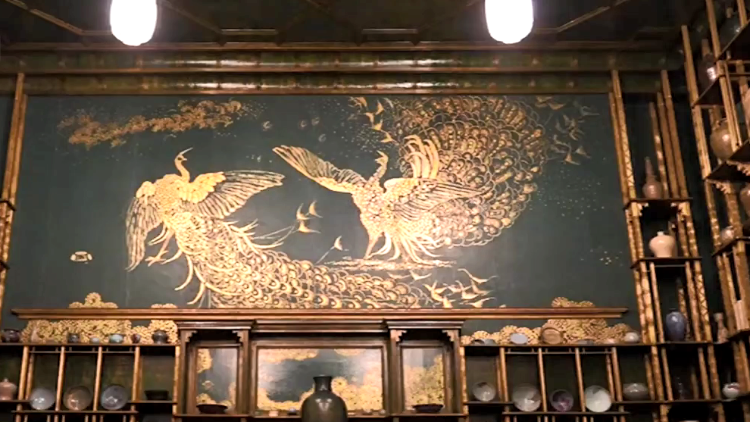The Peacock Room: An Iconic Display of Chinese Porcelain Masterpieces
The Peacock Room, originally created to showcase Chinese porcelain, has become the focal point of a heated debate over art display and aesthetic values.

The Peacock Room, an opulent interior originally designed as a showcase for Chinese porcelain, has become one of the world's most celebrated art installations, steeped in both artistic triumph and historical controversy. Conceived in the 1870s in London, the room was created by artist James McNeill Whistler for the home of shipping magnate Frederick Richards Leyland. Whistler's lavish designs—marked by rich teal walls, gilded latticework, and a striking peacock motif—sparked a heated dispute with Leyland over the aesthetic direction of the project, resulting in a dramatic rift between artist and patron.
Despite its turbulent origins, The Peacock Room continued to fascinate audiences and collectors alike. In the early 20th century, American industrialist Charles Lang Freer purchased the entire room, including its remarkable array of imported Chinese ceramics. Carefully dismantled and shipped across the Atlantic, the room became a centerpiece of Freer's growing collection of Asian art in Detroit and eventually found a permanent home at the Smithsonian’s Freer Gallery of Art in Washington, D.C.
Today, The Peacock Room stands not only as a testament to Whistler's creative genius but also as an enduring symbol of cross-cultural exchange. Its shelves still gleam with delicate porcelain vases and intricate ceramic wares that highlight the profound influence of East Asian artistry in the West. Visitors to the gallery are often captivated by the interplay of color, texture, and light, which together create a multisensory feast that continues to inspire contemporary artists and designers globally.
As it enters its 150th year, The Peacock Room remains a living dialogue between tradition and modernity, East and West, and ultimately between artist and audience. Its legacy is a vivid reminder of how cultural treasures can transcend time and geography—inviting new generations to appreciate the power and beauty of global artistic collaboration.




